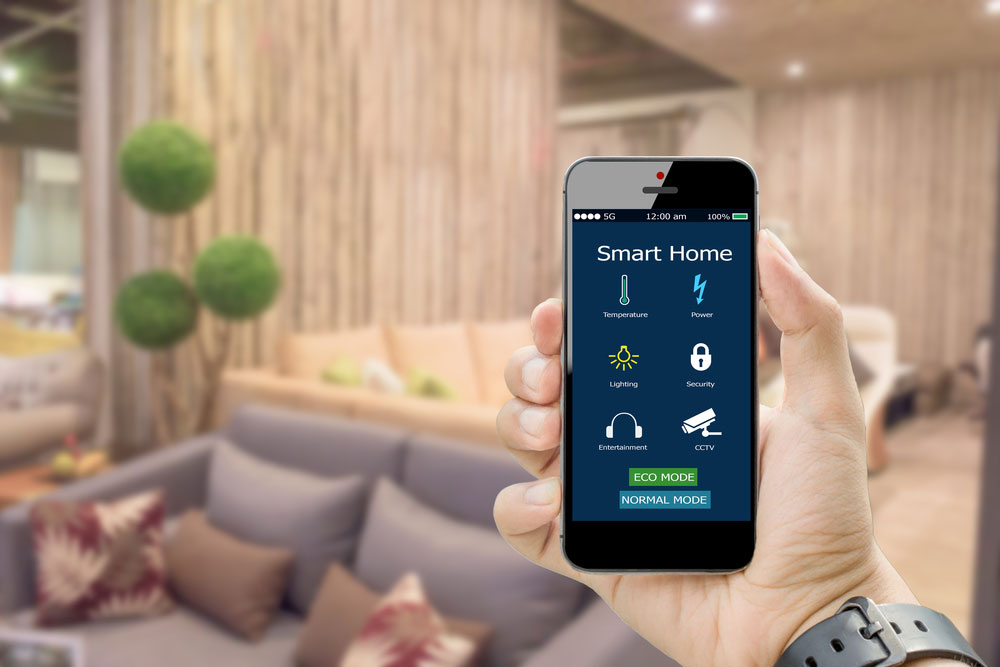When 47-year-old Chris Petrock (pic above) purchased a three-bedroom, three-storey home in Norwalk, Connecticut, US, last March, he decided to make it a smart one — where he could control the lights, refrigerator, thermostat, televisions, security cameras and everything in between — with the sound of his voice or a click on his smartphone.
Some friends and family members were sceptical. “I think a lot of my friends are kind of scared of it,” he said. But he pressed ahead, purchasing a package of Samsung smart appliances and other gadgets; only the installation of the security alarm system required a technician’s help.
He said he likes checking his home remotely from his phone during the day. “I watch my dog. I like to see what she’s doing.” And he uses the touch screen and Samsung’s Bixby voice assistant on his smart refrigerator to play music, order an Uber, ask for recipes, and even see who’s ringing his doorbell.
But it was not the coolness factor that motivated Petrock. It was all about boosting the value of his home. “It is the wave of the future. I know a lot of families will want it,” he said. “For resale value, it’s great!”
Indeed, 59 per cent of American adults surveyed in 2018 said they were interested in using a smart home device, according to Forrester Research.
For many, the entry into the Internet of Things (IoT) world has been through the surging popularity of smart speakers, like Amazon Echo and Google Home, whose voice assistants can answer questions, play music, order food, read news, arrange an Uber ride, and control other connected smart devices.
Forrester predicts that more than 66 million households in the US will have smart speakers by 2022, up from 26 million in 2018. The number of homes with other smart devices, like refrigerators, vacuums, yard irrigation systems, and door locks, will more than double to 26.7 million in 2022 — or about 20 per cent of US households — from 12.2 million in 2018, Forrester projects.
For many people, it’s about convenience and speed. “Consumers don’t just want this convenience, they expect it — they demand it,” said Charles Henderson, global head of X-Force Red, a professional hacking team at IBM Security. But the road to mass adoption of the smart home will likely be a long and bumpy one. Although the number and nature of smart devices is surging by the day, people have been relatively slow to actually buy and install them.
Buying, setting up and connecting smart devices can be costly, cumbersome, and time-consuming. Indeed, as many as one-third of smart speakers are still in their boxes, according to Forrester. “You need people to be patient and comfortable with working through multiple steps of instruction,” said said Frank Gillett, principal analyst at Forrester.
In the smart appliances realm, Samsung has emerged as a leader. With its Family Hub smart refrigerator, for example, you can view the contents of your refrigerator from a smartphone at work, use a grocery app like InstaCart or Amazon Prime Now to order any needed groceries for dinner, and have the food delivered before arriving home. The smart fridge also sends alerts about expiring food and offers recipes through Meal Planner for meals that include those expiring items.
The fridge features a large touch screen, speakers, and the Bixby voice assistant that allows someone to build shopping lists, post photos, play music — and even control the home’s other smart devices, like lights and thermostats, from the fridge.
But demand for consumer smart devices goes far beyond smart appliances, lights, speakers and thermostats. Tech giants and startups alike are rolling out innovative IoT and artificial intelligence-enabled devices at a breathtaking pace as they jockey to stand out in an increasingly crowded market.
Among the newcomers is MassageRobotics, a company that offers body massages at home — only it’s done by a pair of robotic arms (in pic above). Founder Christian Mackin came up with the idea after suffering back and neck injuries in an accident in 2013. He recovered after months of physical and massage therapy.
The choices of fun, cool, quirky smart devices is seemingly limitless — and continues expanding by the day. In the end, no two smart homes will likely look the same. It will all come down to personal preferences.

